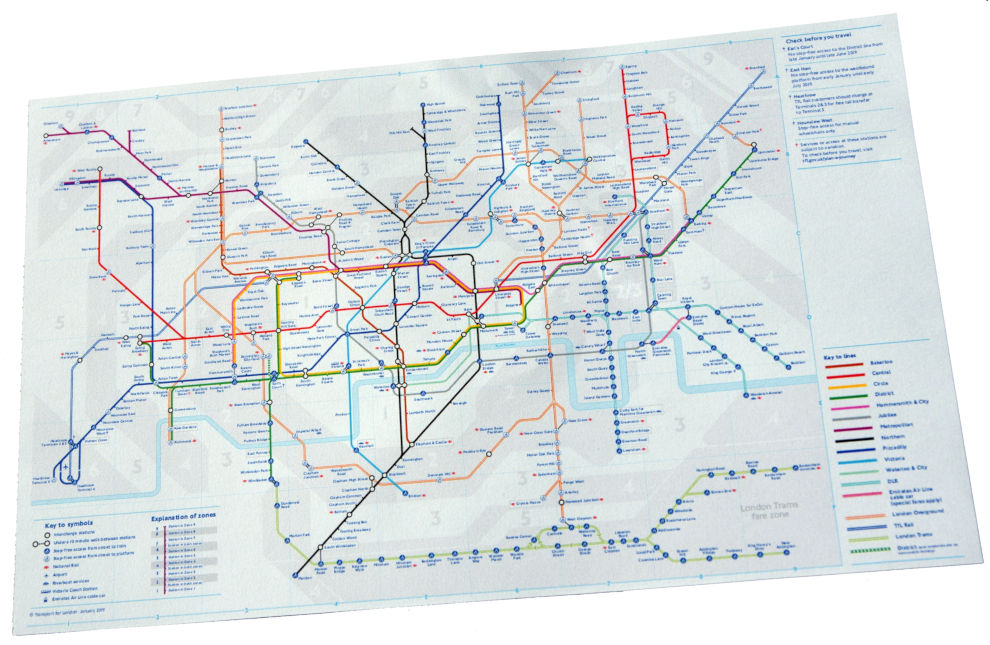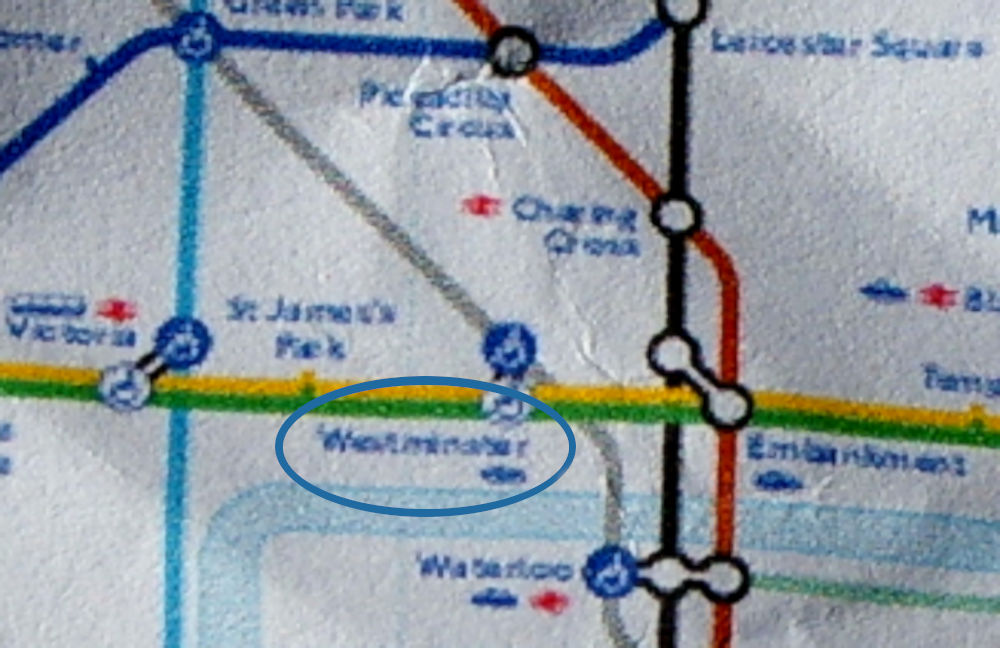NLP has two language models, the Meta Model and the Milton Model. Find out what they are, how they work and why you might use them in your communications.
Labelling Experiences
How long was your last holiday?
How long did you spend telling your friends and colleagues about that holiday?
Clearly, you missed a lot out. Why?
Did you only tell people about the 'important' events?
Important to you, maybe, and important to the way you want people to see you. You created a trailer for the movie to convey the message you wanted
Through your life, you have made the same edits to your experiences to tell a consistent story about yourself. And sometimes, you might want that story to change.
You can try a simple experiment to test this. Pick two common experiences, such as going to a restaurant, a holiday, a work meeting or a hobby. Ask a number of different people to tell you about their most recent memory of these experiences. Notice how the same patterns show up for each person, regardless of the event they're describing, and notice the differences between different people's descriptions. For example, one person might always talk about the other people involved, friends they made and what a good time they had. Someone else might always talk about challenges they overcame. Someone else might always talk about themselves. Think about why these similarities and differences emerge.
The Map is Not the Territory - Creating Maps
From an early age, we learn to create abstract maps of the world around us. We use these maps to navigate, even when we can’t see where we’re going. These maps also contain people and relationships, and we label our maps with symbols, including spoken and written language.

Our experience of life has too much information to relate to directly, so we simplify our life experiences by deleting, distorting and generalising information.

When we relate to our experiences, we miss out a lot of detail. We act as if our map is complete, but it isn’t. There are significant gaps.

NLP's two language models are based on the deletions, distortions and generalisations that are inherent in our language. These ‘transformations’ are consistent and tell us how a person creates their experience of reality. We can use these transformations to both understand and influence.
With Meta Model, we can understand what someone really means, despite what they say. The underlying message is embedded inside the structure of the words they use, and without realising it, people give away information about their experiences and intentions – the truth always comes out.
Meta Model enables us to discover information is missing so that we can understand the person’s original experience of reality
Milton Model enables us to leave out some information so that the person can fill in the gaps from their own experience of reality.
NLP Meta Model
We are complex animals, able to hold onto multiple goals and interests at the same time. Sometimes, those goals are in conflict and our communication systems are sophisticated enough that we can communicate multiple messages at the same time.
For example...
- We can say yes and shake our heads at the same time
- We can say yes in a quiet, hesitant voice tone
- We can say “for sure”, “100%”, “absolutely” - which sound like yes, but are not the same
These are simple examples, things can get much more complex. Here's an example.
“I need to know”
Need is a ‘modal operator of necessity’, a rule which determines how a future action will be taken. A necessity is external, it’s what someone else wants ‘to know’ is therefore in the future. When we combine external motivation with knowledge, we can see that the speaker is not talking about knowledge in the present, but about being able to use that knowledge in the future for someone else, perhaps to pass a test, or to use in a meeting or presentation. The person has revealed a perceived lack of knowledge compared to someone else's judgement. If we don't take care of the perception of judgement then no amount of knowledge will give this person confidence.
Some trainers and writers have called these patterns 'violations', and on training courses, students have to practice spotting 'Meta Model violations'. This is based on the 'rules' of grammar, and is a misleading approach because it assumes that the Practitioner has the valid map and only the client's map is distorted. In fact, both maps are equally distorted, which is why we cross reference the client's language against their own reality, not against anyone else's.
NLP Milton Model
Consider the following statements
Read these words
You must read these words
It is vital that you read these words
Reading these words is vital
How soon might you read these words?
People who read these words are interesting
If you read these words you might find them interesting
How did you react to each of those statements?
Go back and read them again, and notice how you feel as you read each one. What differences do you notice? Why do you think that is?
Have a look at the following image.

Which station is circled?
You ‘know’ that it is Westminster when in fact, that’s not clear from the map. You do not ‘know’, you’ve added information from your own experience to make sense of the gaps. The map is so distorted that you can't see what any of the station names are, so you use your past experience to restore the information that you assume is missing. This means that you're not reading the external map, you're reading your own internal map, which is always inaccurate and out of date. How many times have you seen some, lost, saying, "It should be here!"
With NLP Milton Model, we deliberately miss out information so that the listener has to insert their own experience. The listener is now responding partly to what we’ve said, and partly to their own experience, which makes it easier for the listener to accept new or challenging ideas.
And only you know how good that feels, right?
The purpose of this is not to influence the person against their will, despite what internet marketing gurus tell you about the power of hypnotic sales language. The use of Milton Model in a coaching or personal change context recognises the simple fact that if someone wants something and they don't currently have it, something is stopping them. That barrier is not any external object or person, and it is not about any lack of resources or opportunities. That barrier is the person's own doubts and fears. Therefore, no matter how much someone wants something, they are also resisting their own attempts to change, and this is where Milton Model can help to ease them past that resistance.
Let’s look at some of the different Milton Model structures and work through some examples.
Modal Operators
Future actions follow rules and conditions. Whenever someone talks about what they will or might do in the future, you'll see a modal operator before the verb.
There are two types; Necessity and Possibility.
| Necessity | Possibility |
|
Externally driven Rules, expectations from others |
Internally driven Choice, plans, goals |
|
Must Need Should Ought Have to |
Can Will Want May Might Would |
The two types of modal operator give us the choice of imposing rules versus giving people choice, for example:
- You must not tell people what to do
- You can always give people the choice if you want to
Which did you prefer?
Mind Reading
Mind reading is vital for the survival of a social species, and many different types of animal have been shown to have an understanding of the minds of others, which we can see as empathy, moral and ethical behaviour, and anticipating the needs of others. In NLP, a mind read is where a person takes that social skill a step further and acts as if they know specifically what someone else is thinking, for example, "I know my husband would love this!" or "I know the boss will be angry when she sees this." In Milton Model, we can use a mind read to introduce an idea as if we knew the other person was already thinking it. They will then typically respond by calling that idea to mind and filling in the gaps so that it does indeed become their idea. You know what I mean?
You know what it’s like when...
I’m sure you realise...
You’ll have had the experience...
You’ll remember...
The listener makes sense of the language by finding a reference in their own experience. You can already imagine how this works.
Generalisations
A generalisation applies to everyone, everywhere always, and a generalisation is interpreted as a specific reference, for example:
Always = now
Everywhere = here
Everyone = me
No-one = me
People want stability = I want stability
Negations
A negation can only exist in language, it cannot exist in experience, for example, don’t imagine a cheese sandwich.
Which type of sandwich didn’t you imagine?
Did you answer, "cheese sandwich"? I asked you which type of sandwich didn’t you imagine, not which type of sandwich I asked you to not imagine. Stop thinking about a cheese sandwich.
A negation cannot exist in the real world, only as the absence of what was or could be there. When someone looks across a town and says, "This used to be all fields", they have a frame of reference, a memory, which you do not. Therefore, you interpret a negation by focusing on what is being negated, as if the negation itself doesn't exist.
I’m not telling you = I’m telling you
I’m not saying that = I’m saying that
This could never happen = It’s happening
Nominalisations
We can do some very odd things with language, so we can change relationships and representations such that they no longer describe observable events, but instead describe our experience of those events. For example, if you imagine yourself meeting some people at work, sitting around a table, and you're discussing an action point which you forgot about, and now you're feeling rather uncomfortable, you might quite rightly want to distance yourself from events. To prevent the scenario playing out to its undesirable conclusion, your brain attempts to freeze the moment in time. Meeting people becomes a meeting, sitting becomes a situation, discussing becomes a discussion.
Your statement becomes "I was in this situation at a meeting where there was a discussion". Now that the actions are disconnected from time, they can no longer change. The speaker becomes passive to events.
Decision = to decide
Organisation = to organise
Feelings = to feel
The decision is made = we decided
As a Milton Model pattern, the nominalisation is used to freeze unpleasant experiences and disconnect from them.
Presuppositions
This is simply what must be true for a statement to make sense.
Make America great again = it’s not great now
When we've finished the next project = we will finish it
By hiring me = you will hire me
Subordinate Clause of Time
We can connect together events which are otherwise unconnected, so one event then becomes a cause for another. Examples include before, after, during, while, since, until, as.
As you read these words, you begin to realise...
When you’re ready to learn, you’ll find it easy...
While you're here, you might as well enjoy yourself.
Since you’ve agreed to meet me, and while you make yourself comfortable, let’s start work.
Selectional Restriction Violation
We can apply qualities to things which can’t logically have them, for example:
- The orange night
- The cheerful table
- The welcoming room
- The comfortable chair
Did you notice that the first example was confusing, and as you read down the list, they became more plausible? If you've never experienced an orange night, you had no reference experience from which to fill in the gaps. However, you are much more likely to have said that a chair is comfortable, so that was much easier to understand. However, the chair cannot be comfortable; comfort is a feature of your experience, not of the chair, and the listener applies the quality to themselves:
Comfortable chair = I am comfortable
An open meeting = I am open
A welcoming discussion = I am welcoming
An important choice = I am important
A valuable discussion = I am valuable
We can therefore project a quality or experience by attaching it to something the listener is aware of.
Comparative Deletion
Words like more, less, better, worse, faster, slower and easier imply comparisons. Often, you'll hear people making statements which miss out the comparison, such as, "my new car is much better". The statement is lacking the comparison, so in order to make sense of the language, you insert the missing information, just like you did in the distorted map example above. You will assume that the speaker means "my new car is much better than my old one", yet it's just as likely that they mean "my new car is much better than yours".
In Milton Model, we could use such a comparison to refer to a comparison which the person doesn't even need to tell us about, for example:
How will you know that things are better for you?
You might begin to notice small changes at first...
I wonder what will be the first example that you can think of?
Milton Model in Practice
In a coaching session...
“You know how, sometimes, you might find yourself feeling nervous about speaking to people, and when you get that feeling, and while you notice how you can breathe easily, and how the warm lights, and the soft chair, and the easy words can come, and after such an enjoyable time, you’ve presented yourself so effectively, don’t you think?”
In a presentation...
“I know you have all travelled to be here, and here we are, ready to listen and share and discover the ideas that, together, will take us forward in the direction that is so important to us, to everyone, to people who know that easy promises lead to hard truths, and to people who can’t see a way forwards, and we hear those people, we hear you, and we will face those powerful truths, and together we can create the future that is right for all of us.”
You can try a handy automated Milton Model generator here: https://www.nenlp.com/milton/
In Summary
Language represents our experience of life.
With Meta Model, we can recover the original experience from fragments of language.
With Milton Model, we can use fragments of language to create a rich, personal experience.
With Meta Model, we can understand a person at a far deeper level than they have ever known.
With Milton Model, we can influence a person’s entire experience of reality, for their benefit.

